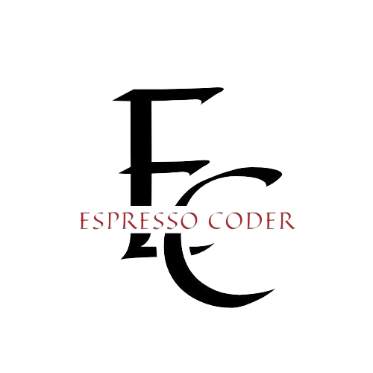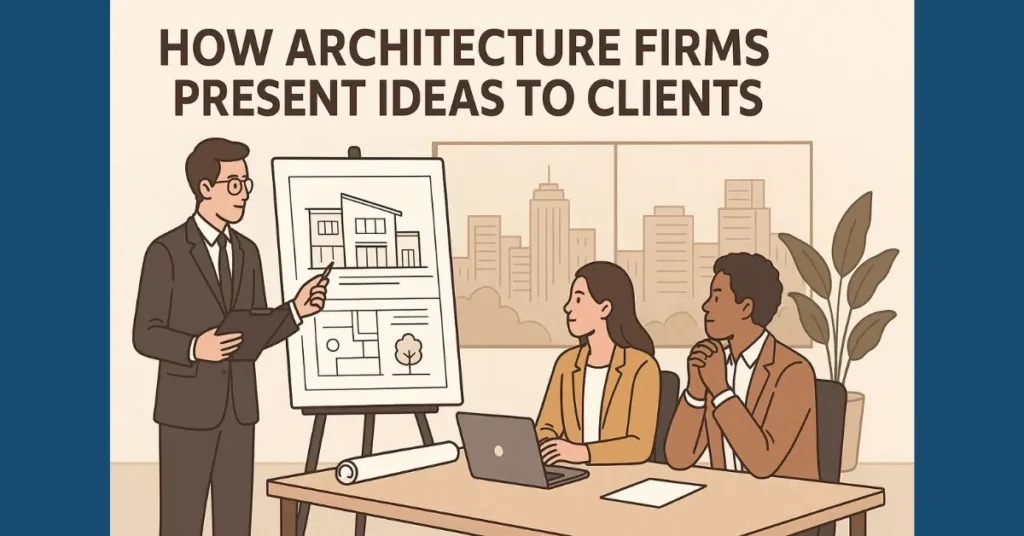Contents
From Blueprints to Experiences
Gone are the days when architects could slap blueprints on a table and call it a presentation. Today’s clients don’t buy drawings – they buy dreams. And dreams, my friend, need better marketing than technical specifications.
The evolution happened so fast it gave the industry whiplash. One day you’re explaining elevations to confused clients. Next day they’re walking through their unbuilt building in VR, asking if the marble could be more… marble-y. Julia Morgan was right: “Architecture is a visual art, and the buildings speak for themselves.” Problem was, blueprints mumbled. Modern presentations? They sing opera.
Here’s what changed everything. Clients stopped trusting what they couldn’t see. Blame Instagram. Blame Netflix. Blame whatever you want. The result? Architecture firms had to evolve or evaporate. Those who adapted discovered something remarkable. When clients can truly visualize their project through a detailed review of every angle and detail, magic happens. Budgets expand. Approvals accelerate. Change requests plummet.
The Psychology of Architectural Persuasion
Emotional Anchoring Through Visualization
Let’s talk about what really happens in a client’s brain during a presentation. Spoiler: it’s not rational. Never was. Never will be.
When you show someone floor plans, their prefrontal cortex engages. Logic. Analysis. Skepticism. But show them a photorealistic rendering of their future lobby at golden hour? Different story. Now you’re hitting the limbic system. Emotions. Dreams. That flutter of “this could be mine.”
Smart firms understand this neural hijacking. They don’t start with specifications. They start with experiences:
- Morning light streaming through proposed windows
- Rain pattering on designed rooflines
- People laughing in planned spaces
- Seasons changing around permanent structures
- Life happening within walls that don’t exist yet
Winston Churchill nailed it: “We shape our buildings; thereafter they shape us.” Clients aren’t buying buildings. They’re buying future experiences. Show them the building, they think. Show them their life in the building, they feel. Feeling closes deals. Thinking creates committees.
The Modern Presentation Toolkit
Virtual Reality Walkthroughs
VR changed the game so thoroughly, we need new rules. Statistics scream the truth – 92% of clients make decisions faster with VR presentations. But why?
Presence. That’s the secret sauce. When clients put on that headset, they’re not viewing your design. They’re inhabiting it. Big difference. They duck under low beams that exist only in pixels. They lean over digital balconies. They get vertigo from virtual heights.
One firm told me about a client who spent forty minutes in VR just opening and closing virtual doors. Weird? Maybe. But that client approved everything. No revisions. Why? Because they’d already lived there. The building was already home.
Interactive Models
Static models are museum pieces now. Today’s presentations are interactive playgrounds. Change materials in real-time. Adjust layouts on the fly. Swap furniture like Tetris blocks.
But here’s the genius part. Every interaction is investment. Every choice they make – selecting that stone, moving that wall, choosing that fixture – is psychological commitment. They’re not evaluating your design anymore. They’re co-creating it. And people rarely reject what they help create.
The tools enabling this aren’t exotic anymore:
- Tablet-controlled presentations – Clients drive the experience
- Gesture recognition – Wave to change designs
- Augmented reality overlays – See new buildings in real locations
- Parametric models – Change one dimension, everything adapts
- Real-time rendering – Every change visible instantly
Storytelling Structures That Sell
Architecture presentations that work follow narrative arcs. Beginning, middle, end. Conflict, resolution. It’s Hollywood meets Helvetica.
Act 1: The Problem Start with pain. The current building is failing. The site is challenging. The program seems impossible. Make them feel the need for salvation.
Act 2: The Journey Show exploration. Dead ends. Breakthrough moments. Let them experience the design process. Not just the result. When they understand the why, they accept the what.
Act 3: The Vision Now unveil the solution. But not all at once. Reveal it like a film director. Exterior establishing shot. Move inside. Flow through spaces. Build to the money shot – that one view that makes everyone gasp.
Smart firms actually hire storytelling consultants now. Not joking. Because data shows narrative presentations get 67% higher approval rates than technical presentations. Stories stick. Specifications slide off.
Managing Client Expectations Through Progressive Revelation
Information overload kills presentations. So modern firms adopted progressive disclosure. Gaming taught them this. You don’t explain every Mario power-up in level one.
Start simple. Massing models. Basic concepts. Let understanding build naturally. Layer complexity gradually:
- First meeting: Overall vision and feel
- Second meeting: Spatial relationships
- Third meeting: Material possibilities
- Fourth meeting: Technical systems
- Fifth meeting: Final refinements
Each stage builds on the last. Clients never feel overwhelmed. They feel educated. Empowered. Part of the process. By the final presentation, they’re practically presenting to themselves.
But here’s the crucial bit. This isn’t dumbing down. It’s smartening up. You’re training clients to see like architects. To understand decisions. To appreciate complexity. When they get it, they value it. When they value it, they pay for it.
The Feedback Loop Revolution
Old model: Present, wait for feedback, revise, represent. Slow. Painful. Expensive.
New model: Feedback happens during presentation. Live. Immediate. Actionable.
Cloud platforms made this possible. Client mentions something during video call? Designer adjusts model while talking. Concern about sight lines? Test them right now. Worried about traffic flow? Simulate it instantly.
This immediacy transforms relationships. Clients feel heard. Really heard. Not “we’ll look into that” heard. But “let’s fix that right now” heard. Trust skyrockets. Revisions plummet. Projects accelerate.
The numbers support this. Real-time feedback reduces revision cycles by 35%. But more importantly, it reduces anxiety. Clients’ biggest fear? Being ignored after signing contracts. Live feedback makes that impossible.
Modern presentations aren’t presentations anymore. They’re conversations. Collaborations. Experiences. The architect who stands at the front with a laser pointer? Dinosaur. Today’s successful architect sits beside the client, both looking at screens, building dreams together.
Technology enabled this evolution. But technology isn’t the story. The story is relationship. Trust. Shared vision. Tools just made authentic collaboration possible. The firms thriving today didn’t just adopt new presentation methods. They adopted new philosophies.
They stopped selling buildings. Started selling futures. Stopped showing designs. Started sharing journeys. Stopped presenting to clients. Started creating with them.
And the clients? They stopped buying architecture. They started buying transformation. Because when you can walk through your future, touch virtual walls, change digital materials, experience unbuilt spaces – you’re not evaluating a purchase. You’re already living in it.
The best architecture firms understand this shift. They’re not in the building business anymore. They’re in the experience business. The presentation business. The dream fulfillment business. Buildings are just the delivery mechanism.
Next time you see an architecture presentation, watch the clients. If they’re studying drawings, it’s old school. If they’re living in possibilities? That firm gets it. And they’re probably booked solid for the next five years.

